This is the last article in a series of three about an autumn trek through what is called the last real wilderness of Europe, Sarek National Park. It was, once again, initiated by the the independent thinking London business man and my great friend with the name Sundip Chaterrjee.
“What ever you do, brother” Sundip told me when we returned to our beautiful camp after the scramble up to the glacier; “Find a new route to avoid those…plants!”
Due to lack of time, we had to return to the same place we set out, at the Sourva Dam. Because the reality is, to be able to cross this great park from north to south for example, you need at least 8 days to enjoy. There´s no reason to rush through a beautiful park like this. However, on the way through the bush I had noticed a rocky ridge which would help us on the way back. We decided to use 2½ days to return and fully enjoy the walk, so we set off once we had dried out gear and just kept height at 800 meters, with the ridge as a goal. It took us through some real easy walking, an easy crossing of the river Lulep Niendojagasj and there was just a small stretch of these evil bushes, but this time around they were dry, so it wasn´t a great deal. We ended up at a locked hut at midday, at the foot of this low ridge and took a long break there whilst pondering the meaning of life. Every walk through Sarek opens up these thoughts. Weather was as usual. On and off sun, wind, rain and dark clouds. Spectacular, but difficult to know how to dress.
Sarek is highly touted in Swedish outdoor media and there´s plenty of guide books as regards to the park. Everything you need to know. The problem with this, is of course, which I have noticed over the last 15 years, is that trash, well trodden tracks appear (not marked on maps) in the most popular areas and, worst of all, the hikers you meet, well, most of them don´t even stop, say hello and talk. They just carry on. The only one´s stopping, is always the ladies, but young men, never. They all look flustered, tired, unhappy and wanna go home. What is the hurry? And regards to well trodden paths, in my book, it just spoils the feeling of a true wilderness. There´s nothing as the joy to set out with a map and compass and make your own route. This is, in my mind, what hiking, freedom and wilderness is all about. However, there´s still plenty of areas in the park, which is still like this. So just stay off the most popular areas like Routesvagge, the Rapa Valley and the routes in and out of Saltoloukta and Ritsem. This is if you want real value time feeling completely free. But this, of course, demands much more of the hiker. And with few exceptions, the hikers we met, were new to the area and needed to stay on the well trodden paths. Some even stayed overnight in the only open hut in the park. (Which is forbidden, except in emergencies. And, why go here, if you don´t wanna learn how to enjoy life in a tent?)
This evening we put up camp at a lake called 802 (altitude) overlooking the impressive Slugga. I was weak in fever, coughing like mad and at this stage, I hadn´t slept one full night since I left Malmö. I just couldn´t breathe lying down. I still felt quite refreshed every morning though. The air is that invigorating and healthy! Sundip, however, had finally adjusted and slept and rested well. All through out the trip he had been reading Torkild Hansen´s great book about the Carsten Neibuhr Expedition featuring Arabia Felix. Every day we talked about the members of the Expedition. We both had the same favorite, Carsten himself, whilst we were shocked over how a guy like the Dane Frederick Christian Von Haven got on it! What a disaster! A great book about a great Expedition which I would hail as one of the biggest ever. Today it is a forgotten Expedition by most. Bringing a good book on a trip like this, is so well worth it!
Next day we pretty much slowly dropped height down to the lake next to Njabbejåhkå at 642 metres, a well trodden trail gave us an easy, but wet, crossing in the morning and we walked another few kilometers through a stunningly colored forest, really Vincent Van Goghesque, and put up camp to a beautiful stream. We spent the rest of the day drying out all our gear. And pondered how lucky we were who once again had a chance to experience this great wilderness area. Go there before it is to late!
“I wanna come back next year, for a longer period!” Sundip said next day before we got on the bus back to Gällivare.
For more photos from this trip, go to here! For a more professional viewing of a few of them, go to here!
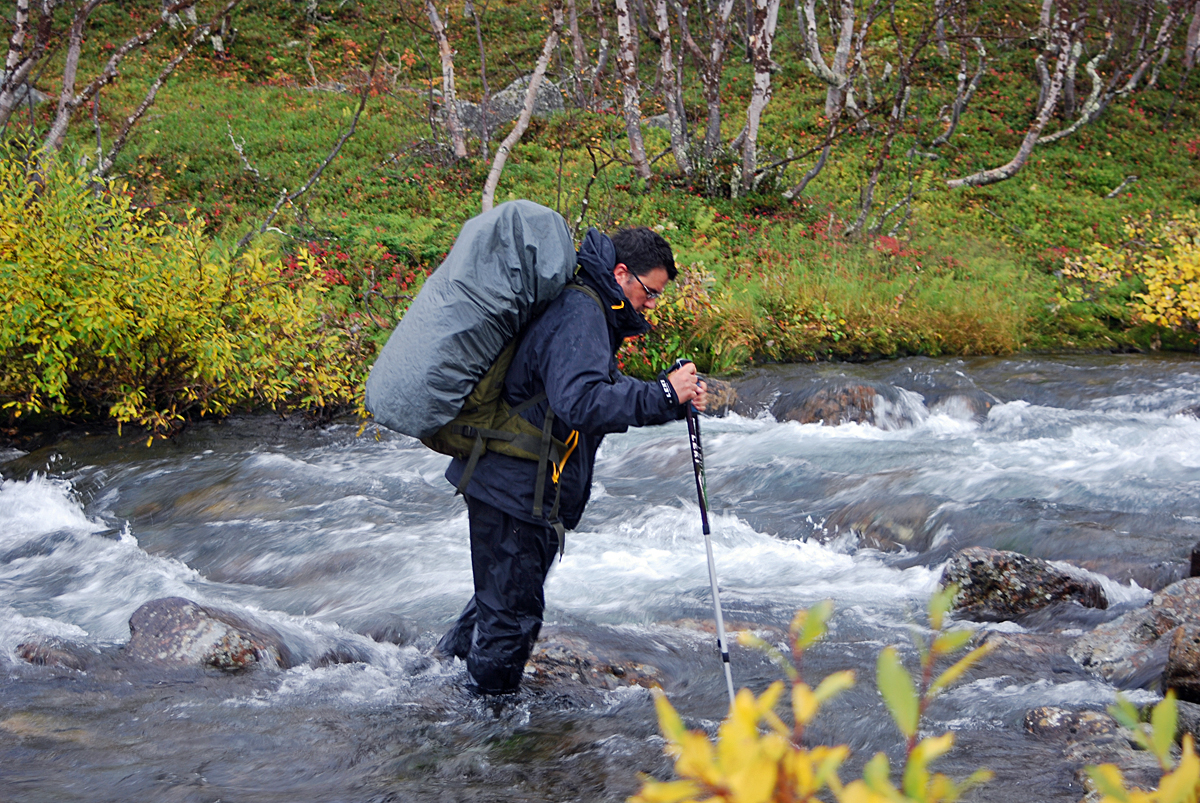
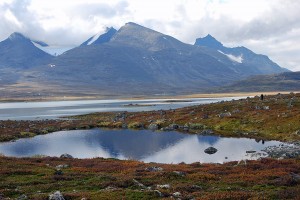
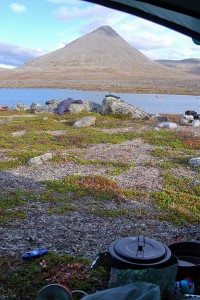
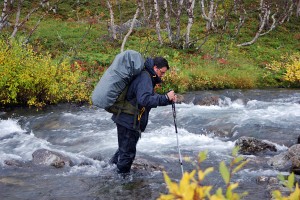
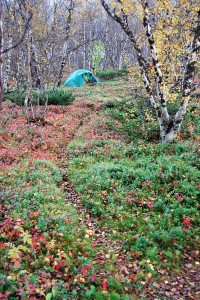

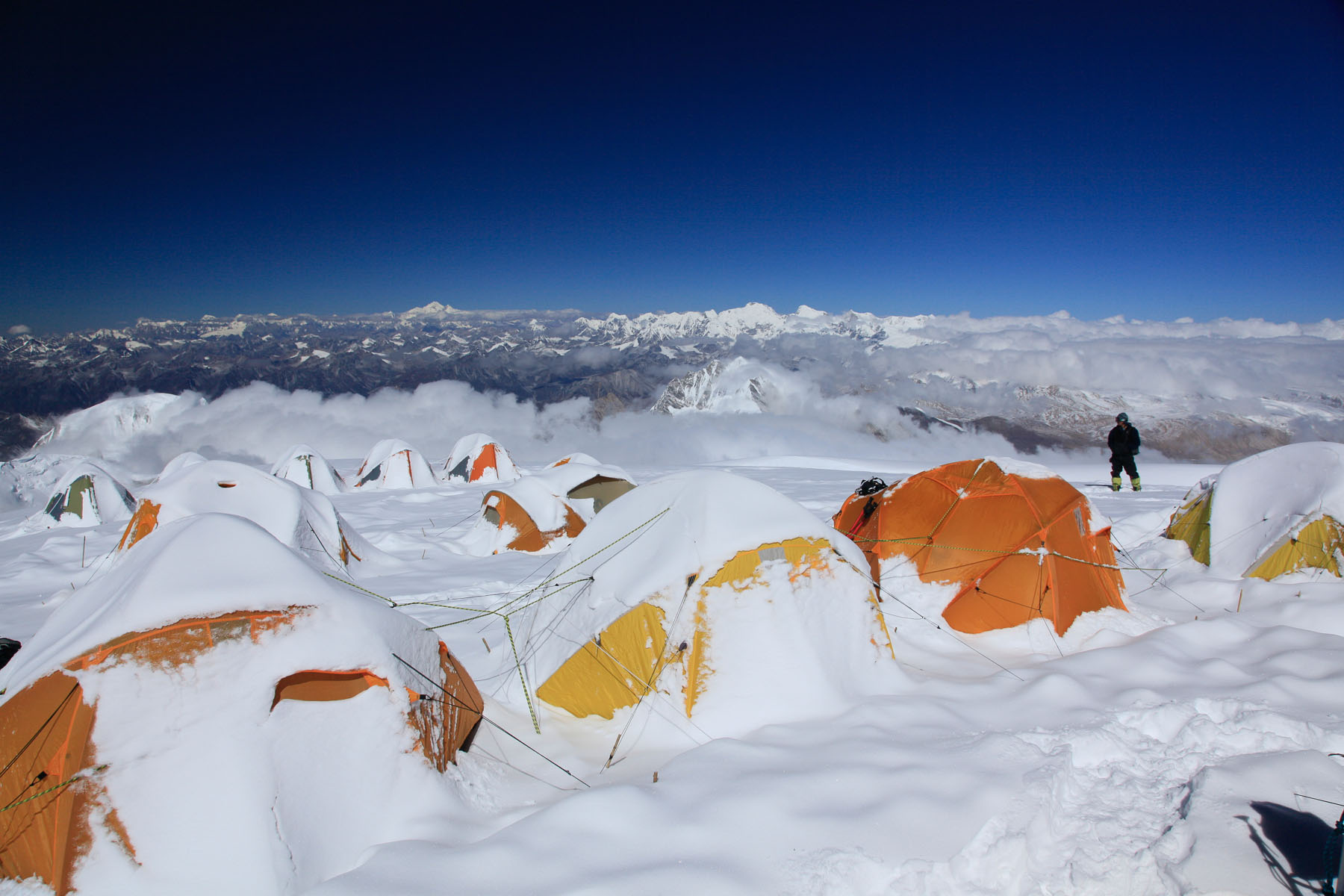
What a wonderful story, i got inspired by you mentioning the Hansen book, ordered it from Amazon right away. will give me some interesting reading while i´m there. I wonder if you could give me some advice for a hike entering Sarek from Kvikkjokk. I will be quite early in the season arriving at the 5th of June. I would like to see Sarek of the beaten track , also i will not bring mountaineering gear. Any ideas are welcome. Thanks again for the entertaining reading!
5th of June, it will be flooding, so it isn´t easy if you have no experience from Sarek. I would suggest that you start from Kvikkjokk, hike to Aktse and just hike up byhind Aktse and head north until you can go no further and hike back the same way. Then you will be off route and it will be stunning and still plenty of snow high up on the mountain. The rivers are limiting the hike and I suspect the will be too strong to cross. But check with people in Kvikkjokk. Good luck! M
I did this hike a few years back, read at the end here at http://www.mikaelstrandberg.com/?s=sarek which describes it for you and check the images here at http://www.mikaelstrandberg.com/photo-gallery/